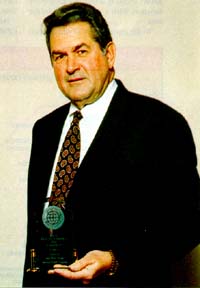
Best Practices: Eastman Kodak
Their documented successes have earned Kodak the first Real Estate Strategy Best Practice Award from the International Development Research Council (IDRC), corporate real estate?s peerless professional association. ?Kodak?s focus on process allowed them to emphasize the activities which required attention in order to achieve success for the real estate function,? noted the IDRC awards committee. The motivation to kick-start Kodak?s real estate program began several years ago with the arrival of new, outside management and a sharpened corporate focus. Between 1992 and 1994, Kodak had either sold or spun off a number of business units that generated combined annual revenue in excess of $7.5 billion. Those profound changes allowed Kodak to concentrate on being the world leader in its core imaging business. For Russell and his corporate real estate organization (CREO), the message was clear: ?We either had to be the best and very proactive and very much at the leading edge, or not be a player.? Unspoken, but clearly understood in the new corporate culture: To not be a player is not a choice. Kodak?s worldwide occupancy cost reduction program has already achieved its $100 million goal, and has identified another $50 million of opportunities, says Russell, who is a vice president of IDRC. Getting there was not easy, of course. CREO started by developing an overall strategic plan for the optimal utilization of the company?s real estate. That meant creating a global database of space. Then, through an exhaustive formal process, every real estate asset was reviewed and evaluated as to how it supported Kodak?s business strategy. The process was often painful, Russell recalls. ?Painful, in the sense of time-consuming and at a level of detail most people don?t want to deal with. What are all your assets, square footage, composition, business strategies? ?It took a year to get useful information,? says Russell. It was absolutely critical for the real estate group to understand the future directions of the business units around the world, and it was important that the plan be an analysis by the business units, not a plan created by CREO, he says. ?What we did was establish common metrics across the world,? explains Russell. ?We established the process and then measured the process against the metrics.? A key element of that phase was that top management understood the program and what would be measured. ?We had to get the right slant on that, get everybody talking the same terms,? says Russell. ?It took a lot of time and effort to get the right spin and the right language.?
|
 Subscribe to Site Selection Magazine
Subscribe to Site Selection MagazineFeedback]|[
Search for
any topic]
Copyright 1997 Conway Data, Inc. All rights reserved
Legal Notice: Because data comes from many sources, Conway Data
can assume no responsibility for accuracy or currency.


